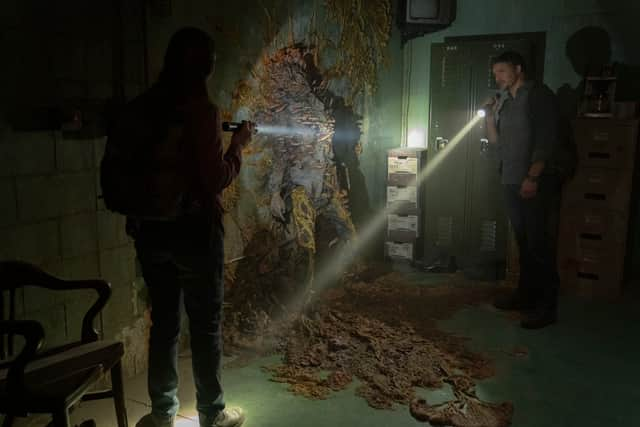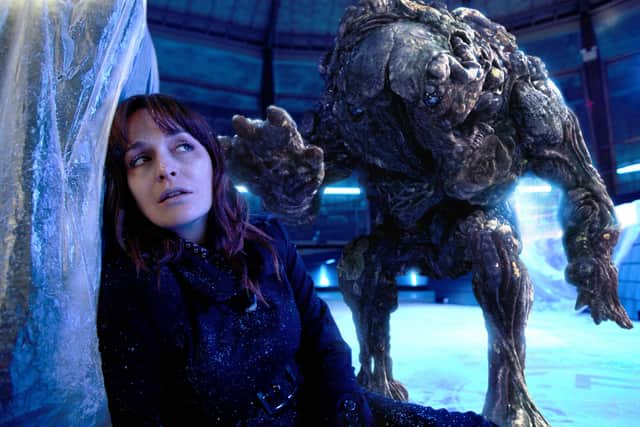Cordyceps: what is the real-life zombie fungus featured in HBO drama The Last of Us, and how does it spread?
This article contains affiliate links. We may earn a small commission on items purchased through this article, but that does not affect our editorial judgement.
and live on Freeview channel 276
In The Last of Us, the end of the world begins with a fungal infection. The apocalypse can be traced back to a mutated strain of Cordyceps – a parasitic fungus that grows inside the host, altering their behaviour and turning them into something akin to a zombie.
Perhaps surprisingly, Cordyceps is a real-life fungus, not something invented for television (or video games). It’s found mainly in Asia, and typically only attacks insects – what The Last of Us asks, essentially, is what if this fungus mutated and began to infect humans as well?
Advertisement
Hide AdAdvertisement
Hide AdHere’s everything you might want to know about the real-life Cordyceps fungus and how it works.
What is Cordyceps fungus?


The Cordyceps fungus – the name comes from the Greek words for “club” and “head”, referring to its shape – is a type of endoparasitoid. That means it’s a parasite that lives inside its host, letting the host continue to grow and move while the parasite attacks it (in contrast to ectoparasitoids, which paralyse the host and feed off it from outside the body).
Typically, the Cordyceps fungus attacks insects and small arthropods, which makes it an entomopathogenic fungus (i.e. a fungus that attacks insects). The parasitic relationship eventually leads to the death of the host, but prior to that the fungus is able to control the movements and actions of the host body – full infection is generally recognised by the behavioural alteration of the host.
They’re found worldwide, with over 600 different subspecies, but the majority of those subspecies are native to Asia – particularly Nepal, China, Bhutan, and Vietnam – and thrive in humid/tropical areas. The Last of Us imagines a variant strain of cordyceps, mutated to adapt a result of climate change; this imagined strain, which is able to attack humans, originates in Indonesia.
How does it spread? Does it have spores or tendrils?


Advertisement
Hide AdAdvertisement
Hide AdThe most famous subspecies of Cordyceps – it’s nicknamed “zombie-ant fungus”, there’s been a few nature documentaries – is Ophiocordyceps unilateralis.
When Ophiocordyceps unilateralis infects an ant, for example, the parasite compels the ant to leave its colony and move to a more humid area – i.e. somewhere more suitable for the parasite to grow. Once the ant arrives in position, the fungus feeds on the ant until it dies – and then, a few days later, a growth blossoms out of the head of the dead ant. This growth then shoots spores into the air, which spread and go on to infect more ants.
Interestingly, Ophiocordyceps unilateralis doesn’t actually infect the brain while the host is alive, with the fungus spreading through the rest of the body and nervous system – seemingly controlling the ant a muscular level.
One of the major differences between the television adaptation of The Last of Us and the video games that inspired it is how the cordyceps is able to spread. In the video games, the infection spreads when people inhale airborne spores – characters like Joel have to wear gasmasks to breathe safely outside. On television, however, there’s no danger of airborne infection; instead, a bite from an infected host or physical contact with mycelial tendrils passes on the parasite.
Where can I find out more about it? Are there any documentaries about Cordyceps?
Advertisement
Hide AdAdvertisement
Hide AdFor obvious reasons, Cordyceps has captured the imagination of various scientists and documentary-makers over the years. You might want to track down the nature documentary that inspired The Last of Us creator Neil Druckmann in the first place – it was, naturally, an episode of David Attenborough’s Planet Earth. You can find the clip on YouTube, or watch the full episode on BBC iPlayer – and if that’s not enough, Attenborough discussed Cordyceps again more recently in his Netflix documentary Our Planet.
Otherwise, you might also want to check out this National Geographic article, this piece at ArsTechnica, or this story from NPR (which features some brief testimony from Neil Druckmann alongside entomologists).
Does it appear anywhere else in pop culture?


The Last of Us is the most famous depiction of Cordyceps in popular culture, but it’s not the only one. Another major example is the novel The Girl with All The Gifts (and the subsequent film adaptation), which imagines a similar post-apocalyptic scenario in which cordyceps has mutated to infect humans. The novel came out in 2014, expanding on a short story first published in 2013 – the same year that The Last of Us was released.
Another similar example, albeit one likely to be overlooked, is the ITV sci-fi drama Primeval. An episode in its third series, which aired in 2009, imagined a highly contagious and highly aggressive fungal parasite that functioned in a similar way to the Infected from The Last of Us. (A few years before that, Primeval had introduced a noise-sensitive predator very similar to the creatures from A Quiet Place, once again ahead of the curve.)
Advertisement
Hide AdAdvertisement
Hide AdThe Last of Us begins on HBO on Sunday 15 January. In the UK, it’ll air on Sky Atlantic at 2am on Monday 16 January, with a later repeat at 9pm. You’ll also be able to watch the series on NOW TV.
You can read our review of The Last of Us here, listen to us discuss it on our Screen Babble podcast here, and read more of our coverage here.
Comment Guidelines
National World encourages reader discussion on our stories. User feedback, insights and back-and-forth exchanges add a rich layer of context to reporting. Please review our Community Guidelines before commenting.
